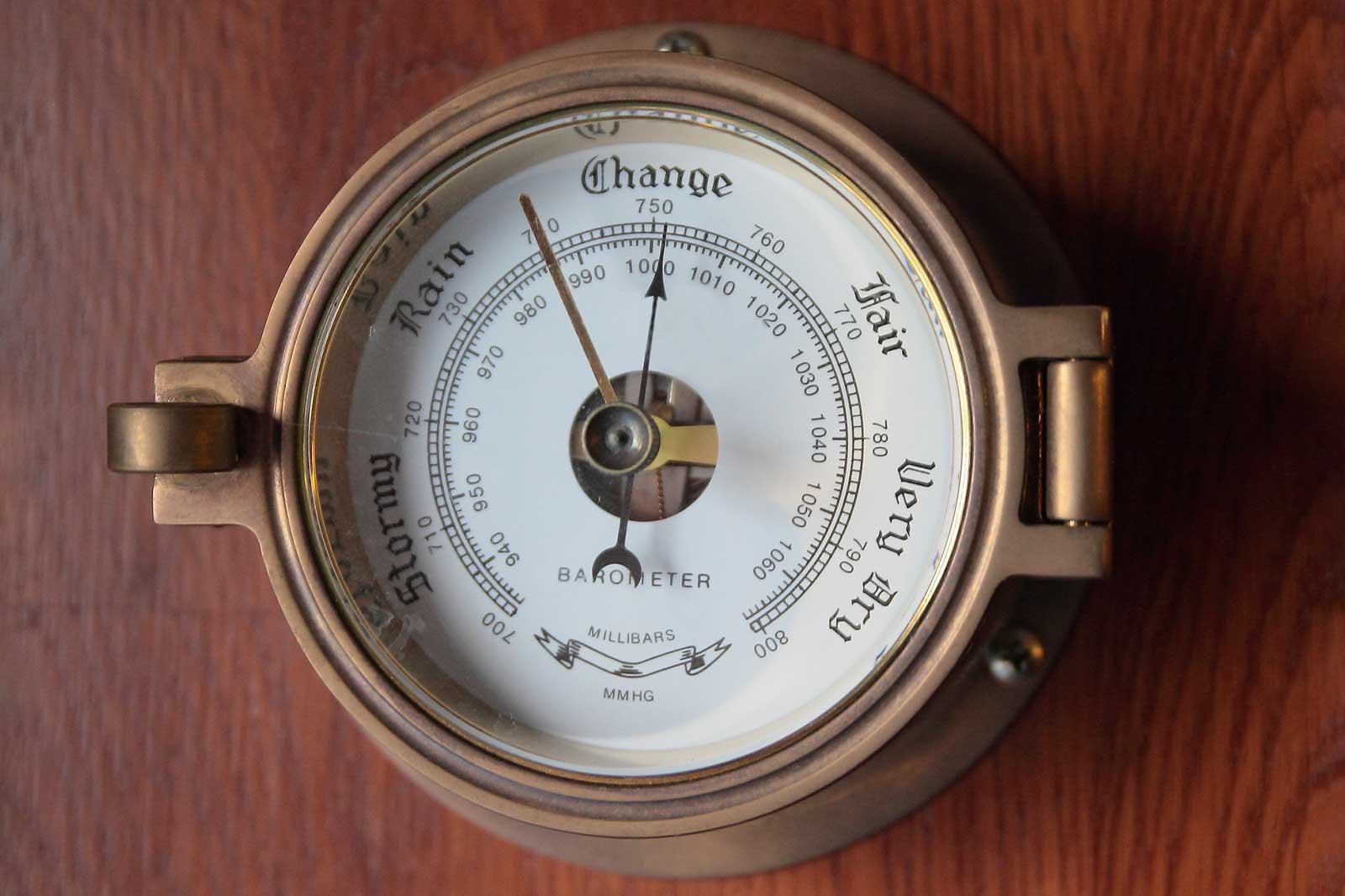
What is a barometer? A barometer is an instrument that measures atmospheric pressure. This tool helps predict weather changes by detecting pressure variations. When the pressure drops, it often signals stormy weather, while rising pressure suggests fair skies. Invented by Evangelista Torricelli in 1643, the barometer has evolved from simple mercury-filled tubes to modern digital devices. Understanding how a barometer works can help you grasp weather patterns better. Whether you're a weather enthusiast or just curious about how meteorologists forecast the weather, learning about barometers offers valuable insights into the science of our atmosphere.
What is a Barometer?
A barometer measures atmospheric pressure. This instrument helps predict weather changes by detecting pressure variations. Let's dive into some fascinating facts about barometers.
-
The first barometer was invented by Evangelista Torricelli in 1643. He used mercury to measure atmospheric pressure.
-
Barometers come in two main types: mercury and aneroid. Mercury barometers use liquid mercury, while aneroid barometers use a small, flexible metal box.
-
The word "barometer" comes from the Greek words "baros" (weight) and "metron" (measure).
-
A barometer can help forecast short-term weather changes. High pressure usually means good weather, while low pressure often indicates bad weather.
How Barometers Work
Understanding how barometers function can be quite intriguing. They measure the weight of the air above them, which changes with weather conditions.
-
Mercury barometers consist of a glass tube filled with mercury, inverted in a mercury-filled basin. The height of the mercury column changes with atmospheric pressure.
-
Aneroid barometers have a sealed metal chamber that expands or contracts with pressure changes. This movement drives a needle on a dial to indicate pressure.
-
Barometers are often calibrated in units like inches of mercury (inHg) or millibars (mb).
-
Changes in atmospheric pressure can affect human bodies. Some people experience headaches or joint pain when pressure drops.
Historical Significance of Barometers
Barometers have played a crucial role in scientific advancements and daily life for centuries.
-
In the 17th century, barometers helped scientists understand the concept of a vacuum.
-
Sailors used barometers to predict storms and navigate safely. A sudden drop in pressure warned of approaching bad weather.
-
Barometers were essential tools for early meteorologists. They provided data to develop weather maps and forecasts.
-
The barometer's invention paved the way for other meteorological instruments like thermometers and hygrometers.
Modern Uses of Barometers
Today, barometers are used in various fields beyond weather forecasting.
-
Barometers are crucial in aviation. Pilots use them to determine altitude and ensure safe flights.
-
Smartphones often have built-in barometers. These sensors improve GPS accuracy and help with weather apps.
-
Barometers are used in scientific research to study atmospheric conditions and climate change.
-
Some outdoor enthusiasts use portable barometers for hiking and mountaineering to predict weather changes.
Fun Facts About Barometers
Barometers have some quirky and lesser-known aspects that make them even more interesting.
-
A barometer can be used to measure altitude. Higher altitudes have lower atmospheric pressure.
-
Some antique barometers are highly collectible. They are valued for their craftsmanship and historical significance.
-
Barometers can be affected by temperature. Mercury barometers need temperature correction for accurate readings.
-
The world's largest barometer is in Germany. It stands over 12 meters tall and is a popular tourist attraction.
Barometers in Popular Culture
Barometers have made their mark in literature, art, and even music.
-
In Jules Verne's novel "Twenty Thousand Leagues Under the Sea," Captain Nemo uses a barometer to predict weather.
-
Barometers often appear in old paintings and illustrations, symbolizing scientific curiosity and exploration.
-
The band "Barometer Soup" named their album after the instrument, reflecting its importance in weather prediction.
-
Some movies and TV shows feature barometers as props, adding a touch of authenticity to historical settings.
Barometers and the Environment
Barometers also play a role in environmental monitoring and conservation efforts.
-
Barometers help track atmospheric pressure changes related to climate change. This data is crucial for understanding global weather patterns.
-
Environmental scientists use barometers to study air quality and pollution levels.
-
Barometers can detect pressure changes caused by natural disasters like hurricanes and tornadoes, aiding in early warning systems.
The Final Word on Barometers
Barometers are more than just weather tools. They’ve played a crucial role in science, navigation, and even art. From predicting storms to helping sailors find their way, these instruments have a rich history. They come in various types, like mercury, aneroid, and digital, each with unique features. Understanding how they work can give you a deeper appreciation for the science behind weather forecasting. Whether you’re a weather enthusiast or just curious, knowing these 27 facts can make you see barometers in a new light. So next time you check the weather, remember the fascinating history and science behind that simple forecast. Barometers are a testament to human ingenuity and our quest to understand the world around us. Keep exploring, stay curious, and let the wonders of science inspire you every day.
Was this page helpful?
Our commitment to delivering trustworthy and engaging content is at the heart of what we do. Each fact on our site is contributed by real users like you, bringing a wealth of diverse insights and information. To ensure the highest standards of accuracy and reliability, our dedicated editors meticulously review each submission. This process guarantees that the facts we share are not only fascinating but also credible. Trust in our commitment to quality and authenticity as you explore and learn with us.
